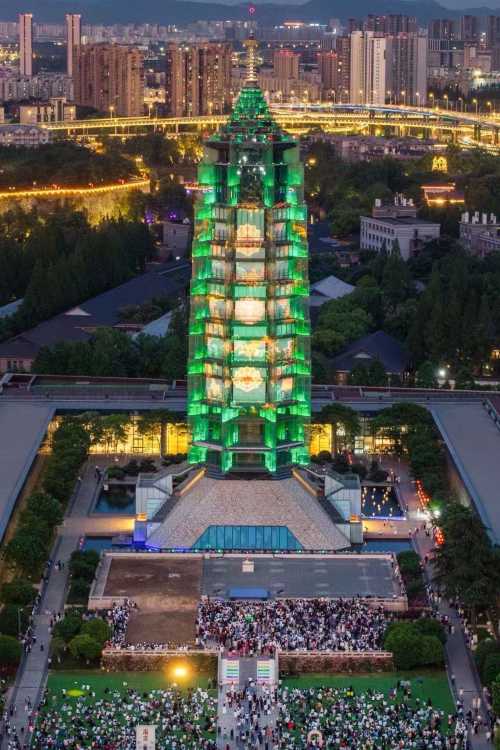Popular Trip Moments
Nanjing! Stayed at my dream hotel, who gets to live in such an awesome place? | Nanjing Hidden Paradise – A Dream Nestled Among the Pines, A Night of Jiangnan Reverie | A guide to help you explore Nanjing Zhongshan Scenic Area | Encountering Wutong Mansion, Unlocking the Poetic Dwelling of Nanjing | 🍁🧧 Nanjing in Autumn — A City Dressed in Quiet Gold | Ning-Zhen-Yang | 4-Day In-Depth Travel Guide | 6-Day Tour of Nanjing and Surrounding Areas: Ultimate Travel Guide | Early summer in Nanjing | Hidden in every green | This hidden gem family slide room in Nanjing is truly next level!! | The Lalu Nanjing | The "White Moonlight" of Hotels, an Artistic Riverside Retreat | Summer Paradise | Refreshing Wellness Getaway | Nanjing Fengsheng Wuji Hotel | Weekend Escape Plan! 5 Hidden Gem Cities Just 1-3 Hours Away by High-Speed Rail | Stay in the picturesque Jinling Town of the Six Dynasties, so beautiful it keeps you awake at night! | Nanjing Xuanwu Lake | Ultimate Travel Guide | "8 Secret Ways to Play in Nanjing That Locals Never Share! Even Tour Guides Don’t Know #5!" | Xihan Yingmanxin Mansion Nanjing | Cloud Parenting Beyond Imagination | This homestay is a paradise for photography enthusiasts | A must-stay hotel in Nanjing!!! | Nanjing Yihe Jiezi Garden: A Tranquil Journey Through Time | Dragon Boat Festival & Children's Day Fun in Nanjing! Sweet-Themed Room Alert! | Come to Nanjing and you won't want to leave this Xuanwu Lake homestay | Nanjing Travel Guide: Explore Nanjing with a Photographer | Nanjing Jianye | A Highly Recommended Luxury Hotel | 🇨🇳 Drinking a cold beer in Shaoxing, China | Weekend Family Trip to Nanjing|A Two-Day Getaway at Purple Lake Resort | A City Retreat Above the Clouds – Stay Experience at Nanjing Himalaya Holiday Inn | Nanjing Qinhuai|A Tranquil Oasis Amidst the Bustle, Truly a Divine Homestay | Wow! Nanjing Actually Hides Such a Treasure Hotel!
Recommended Attractions at Popular Destinations
Bangkok attraction near me | Manila attraction near me | Tokyo attraction near me | Taipei attraction near me | Hong Kong attraction near me | Seoul attraction near me | Kuala Lumpur attraction near me | Los Angeles attraction near me | Shanghai attraction near me | New York attraction near me | Shenzhen attraction near me | Osaka attraction near me | Singapore attraction near me | London attraction near me | Guangzhou attraction near me | San Francisco attraction near me | Beijing attraction near me | Macau attraction near me | Bali attraction near me | Jakarta attraction near me | Paris attraction near me | Ho Chi Minh City attraction near me | Istanbul attraction near me | Phuket attraction near me | Chicago attraction near me | Seattle attraction near me | Toronto attraction near me | Orlando attraction near me | Cebu attraction near me | Chiang Mai attraction near me
Popular Attractions
Leifeng Tower | Auckland Zoo | Colosseum | Ba Na Hills | The Huangpu River Cruise | Unit 731 Museum | Suzhou Ancient Canal | Palace of Versailles | Huangpu River Cruise(Shiliupu Pier) | Stirling Castle | Ih Juu Temple | Temple of Olympian Zeus | Shangxiajiu Pedestrian Street | Chao Phraya River | Nam Du Island | Tennen Onsen Naniwanoyu | Guilin Park | Al Mina Mosque | Sree Avanangattil Kalari Sree Vishnumaya Temple | Balaji Dhaam | Mandir | Ramaguda Reservoir | Porcupine Ridge Mountain Bike Park | Obere Hunte | Iglesia de Jesucristo el Caballero de la Cruz | TruExit | Pond | Réserve naturelle de la forêt des volcans et des Vogelsteine | Rod Laver Arena
Popular Restaurants in Nanjing
Plum Garden | Jiangnan Wok | 78 PRIME SEAFOOD & STEAKHOUSE | LAKE-VIEW REVOLVING RESTAURANT | LiJi QingZhenGuan | ZIJIN | Jiangnan Wok · Yun | Yue Cui Xuan Chinese Restaurant | SUSHI KIWAMI | Guimanlong (dejiguangchang) | 文德桥·金陵茶楼(夫子庙店) | Soalian | THE GREAT LION | Red Restaurant (Laomendong) | Xunwei Jinling Shiercai (Lao East Gate Store) | Nanjing Da Pai Dang ( De Ji Square ) | 南京涵碧楼酒店·L Bar 大堂吧 | 永隆·麺art of noodle(江东店) | TongQingLou (ZhuJiang Road) | Nanjing Impressions (Zhongshanling) | DAI YUET HEEN (The Ritz-Carlton, Nanjing) | Pin Ning Fu | HAOPO STEAMED DUMPLINGS | 禾牛社·和牛寿喜烧自助火锅(水游城店) | Lvliuju (fuzimiao) | Guangyingjulaozhengxing Restaurant | 螺丝找虾(1912店) | 老爷锅(金鹰GE66竹山路店) | LONG YIN SHAN FANG | Quanjude Roast Duck
Popular Ranked Lists
Popular Premium Hotels in Midland | Popular Premium Hotels in Kufri | Popular Premium Hotels in Durango | Top 3 Best Things to Do in Sanmenxia | Popular Best Things to Do in Meizhou | Top 10 Local Restaurants in Montreal | Top 10 Local Restaurants in Stockholm | Popular Premium Hotels in Villavicencio | Top 9 Local Restaurants in New Delhi | Popular Must-Visit Restaurants in Barcelona | Top 7 Best Things to Do in Yichun | Top 11 Best Things to Do in Dehong | Popular Best Things to Do in Hotan Prefecture | Top 6 Best Things to Do in Bijie | Popular Must-Visit Restaurants in Kuala Lumpur | Popular Premium Hotels Near Garland County | Top 4 Best Things to Do in Wenling | Top 12 Local Restaurants in Glasgow | Popular Premium Hotels in Oudtshoorn | Top 4 Best Things to Do in Nanyang | Popular Premium Hotels in Ishikawa Prefecture | Popular Premium Hotels in Durango | Top 3 Best Things to Do in Fuding | Top 9 Local Restaurants in Perth | Top 5 Best Things to Do in Songpan | Popular Must-Visit Restaurants in Bangkok | Popular Luxury Hotels Near Vienne | Popular Must-Visit Restaurants in Ho Chi Minh City | Popular Premium Hotels in Astrakhan | Popular Best Things to Do in Daqing
Payment Methods
Our Partners
Copyright © 2025 Trip.com Travel Singapore Pte. Ltd. All rights reserved
Site Operator: Trip.com Travel Singapore Pte. Ltd.
Site Operator: Trip.com Travel Singapore Pte. Ltd.

















